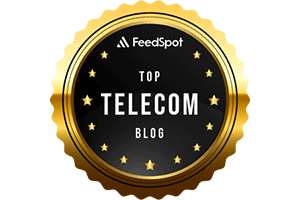Highlights of 2025 Broadband Nation Expo: Comcast, T-Mobile keynotes + selected quotes
Over 100 ISPs from across the U.S., vendors in the broadband ecosystem, organizations and more gathered in Orlando, FL November 17-19th for the TIA’s annual Broadband Nation Expo, to talk about the challenges of delivering broadband today. Keynote speakers discussed topics including Comcast’s 10G network technologies and AI, T-Mobile’s fixed wireless access strategy, AT&T’s fiber expansion, and Google’s use of AI in data center innovation.

- Future-proofing the network: Strategies for evolving existing broadband infrastructure to meet increasing demands from emerging technologies like AI, advanced streaming, and more.
- 10G technology and multigigabit speeds: Nafshi discussed progress and plans for delivering multigigabit upload and download speeds to millions of Americans using this standard.
- Network resilience: Insights into how Comcast is building a more resilient network to keep communities connected, particularly in the face of severe weather events.
- Innovation and strategy: Leading with purpose and innovation in the era of the Broadband Equity, Access, and Deployment (BEAD) program.
- Core-to-edge intelligence: The integration of artificial intelligence and a robust fiber backbone to create a smarter, faster, and more reliable connectivity experience for customers.
Comcast is using artificial intelligence (AI) to create a “smarter,” self-healing 10G network, emphasizing distributed AI at the network edge to improve customer experience and network reliability. He noted that investments in 10G technologies like DOCSIS 4.0 and next-generation amplifiers are aimed at future-proofing the network for anticipated data usage growth. In particular. Comcast applies AI at various levels of its 10G network for automation, self-healing, performance optimization, and cybersecurity. This approach is designed to create a “smarter” and more resilient network, with a focus on real-time, distributed intelligence at the network’s edge.
- Predictive maintenance: Using AI and machine learning (ML), the network can analyze performance data to identify issues before they impact customers, reducing the time needed for repairs. The network also automatically detects when a customer’s modem is offline and analyzes the data to determine the cause of the outage.
- Capacity scaling: The Octave platform uses AI to automatically increase network capacity in areas experiencing unexpected spikes in data traffic, such as during live-streamed events.
- Traffic rerouting: AI agents can perform large-scale tasks like automatically rerouting data traffic around fiber cuts to prevent service interruptions.
- Automated deployment: With its AI and ML capabilities, Comcast automates over 99.7% of all software changes on the network, which also helps prevent human-caused errors.
- In-home WiFi optimization: Every hour, AI analyzes thousands of data points from millions of network devices to enhance in-home WiFi performance. The xFi platform also uses AI to dynamically optimize home WiFi based on user behavior and signal interference.
- Outage restoration: AI helps accelerate recovery efforts during extreme weather by detecting mass outages faster, pinpointing the cause, and identifying where technicians are needed most.
- Threat mitigation: AI agents are being trialed to identify cyber threats and take proactive measures to mitigate them, providing end-to-end cybersecurity protection.
- Optimized power usage: AI agents can also optimize power usage in the network based on spikes and lulls in data consumption.
……………………………………………………………………………………………………………………………………………………………………………………………………………..
II. T-Mobile Chief Broadband Officer Allan Samson said the “uncarrier” has gained sizable 5G FWA market share in urban markets (it’s offered in Santa Clara, CA- hometown of this author). 70% of T-Mobile’s FWA activations come from the “top 100” U.S. cities and approximately 65% of fixed wireless sales per quarter happen in suburban and urban markets.
Samson said improved quality of service is one reason more people in urban areas are drawn to FWA, touting T-Mobile’s average FWA download speed sits at 239 Mbps and latency has decreased to about 34 milliseconds. T-Mobile has now converted every fixed wireless customer to a standalone 5G core network (specified by 3GPP). “From a technology perspective, this so-called cell phone quality internet has not only made a lot of progress but has so much more room to run in terms of the innovation,” Samson added.
He admitted T-Mobile’s lack of expertise in fiber optic networks: “Our approach is real simple. We don’t build wireline networks, you’ve got to know what you’re not good at,” he said. Hence T-Mobile’s decision to acquire both Lumos and Metronet. Samson said T-Mobile expects to close 2025 with “well north of 3 million homes passed” and “hopefully about 900,000 to a million customers.”
Selected Quotes:
Dr. Dong Hao, market technology development manager, Optical Communications at Corning, told a breakfast session about Meta’s 1 million GPU data center campus in Louisiana. “It’s so gigantic that it’s going to consume 8 million miles of optical fiber in that data center, alone,” he said. “How do you manufacture that? We are dealing with the capacity crunch. It’s a high-priority issue.”
In the age of AI….Robin Olds, senior business development manager, Broadband Program Office, Americas Service Provider, from Cisco, said that service providers are getting more comfortable with AI in the network, given rising costs. “Trusting the networks to make changes on the fly – that is a really hard thing for humans to do, but providers are starting to look at that to save time and money.”
“It’s about getting smarter networks, not just faster networks,” said Jeff Brown, senior director, Segment Marketing, Calix, said during a panel on access technologies.
Mike Lubin, senior advisor and VP at ViaSat thinks LEO satellite transport will emerge as FWA backhaul “in the interim” until fiber or another optical communications technology comes along. Some combination of satellite and FWA is “going to be the paradigm” for connecting about 2.6 billion unconnected folks globally.
…………………………………………………………………………………………………………………………………………………………………………………………………………………….


